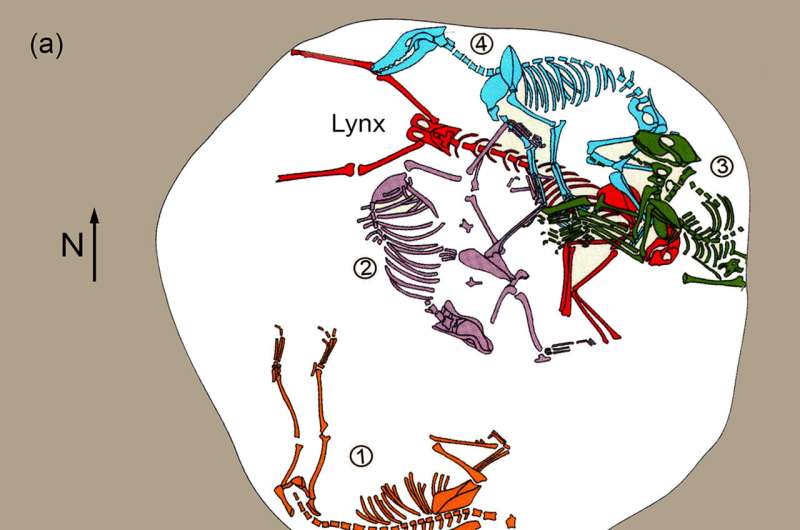Lynx found at bottom of Roman era pit, along with four dogs, mystifies archaeologists

A team of archaeologists at the Institute of Archaeology, HUN-REN Research Center for the Humanities, in Hungary, working with a colleague from Stockholm University, has revisited a mystery: a Roman era lynx skeleton buried in a pit with four dog skeletons, all layered above it.
In their paper published in the International Journal of Osteoarchaeology, the group describes the circumstances surrounding the find and offers some theories as to why it came to be.
The lynx is a type of cat, one that is known for its tufted ears and bobbed tail. Four species are known to exist, all in the Northern Hemisphere: Iberian, Canadian and Eurasian—the fourth type is known as a bobcat and lives in North America. The Eurasian lynx once had a very large population, but in modern times, due to human encroachment, it has become endangered.
Finding old lynx remains, the researchers note, is uncommon because over the course of their history, they have had limited contact with human beings. Thus, the finding of one in a pit is rare, but finding one intentionally buried in the same pit as domesticated dogs, is unheard of.
The pit was found at a dig site in Zamárdi-Kútvölgyi-dűlő, Hungary in 2002. Archaeologists have been digging up human skeletons and associated artifacts there, dated back to the Roman era—approximately 1,500 years ago.
In the 1.4-meter-deep pit, four dogs were found; two male, two female, all roughly the size of a German shepherd—and a lynx skeleton. The lynx remains were found at the bottom of the pit, with the dog skeletons above it. The animals had a 20 to 40 cm layer of dirt between each of them.
The research team fully acknowledges that they are mystified by the find, but offer some possible theories. One is that the dogs and the lynx all wound up in a fight, and all wound up dead, and were then buried together. Another is that it was a ritualistic burial, though they note, that seems unlikely because of the lack of ritualistic symbols or other materials. They conclude that the real reason for the burial will probably never be found.
More information: Erika Gál et al, A fifth‐ to sixth‐century CE lynx (Lynx lynx L., 1758) skeleton from Hungary 2: Stature and archaeological interpretations, International Journal of Osteoarchaeology (2024). DOI: 10.1002/oa.3289
© 2024 Science X Network
No comments:
Post a Comment